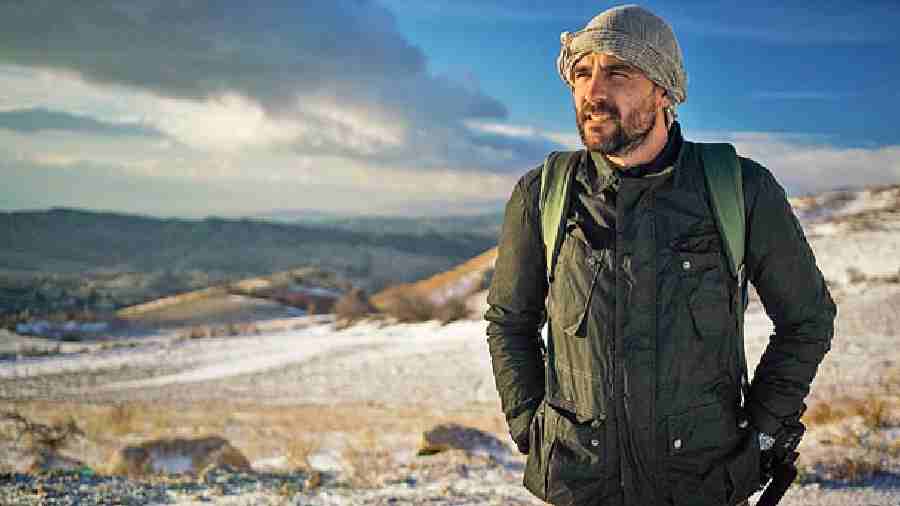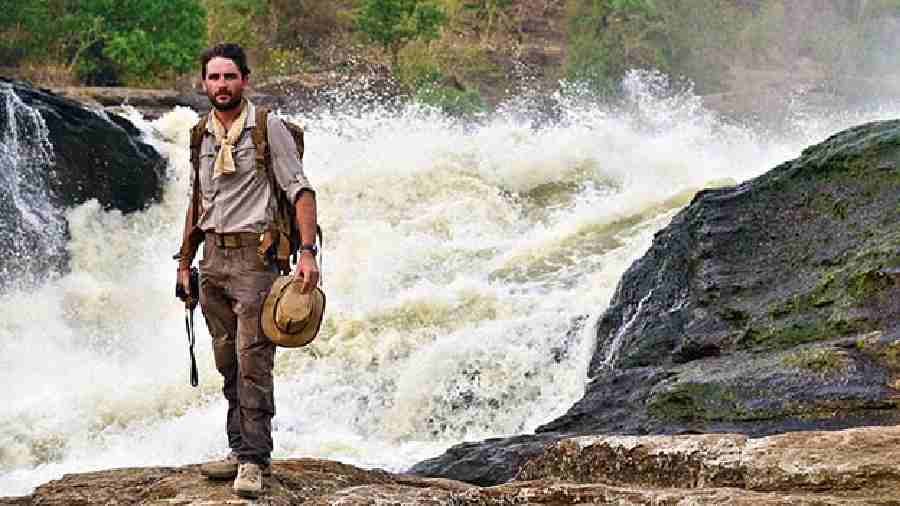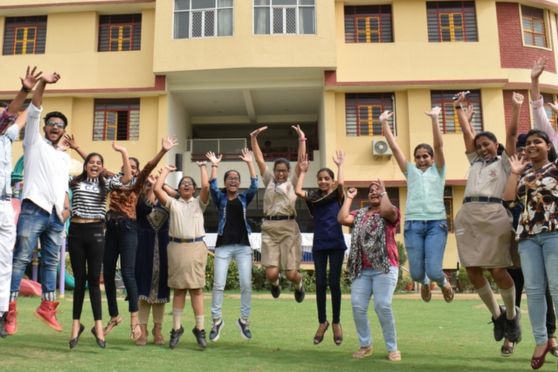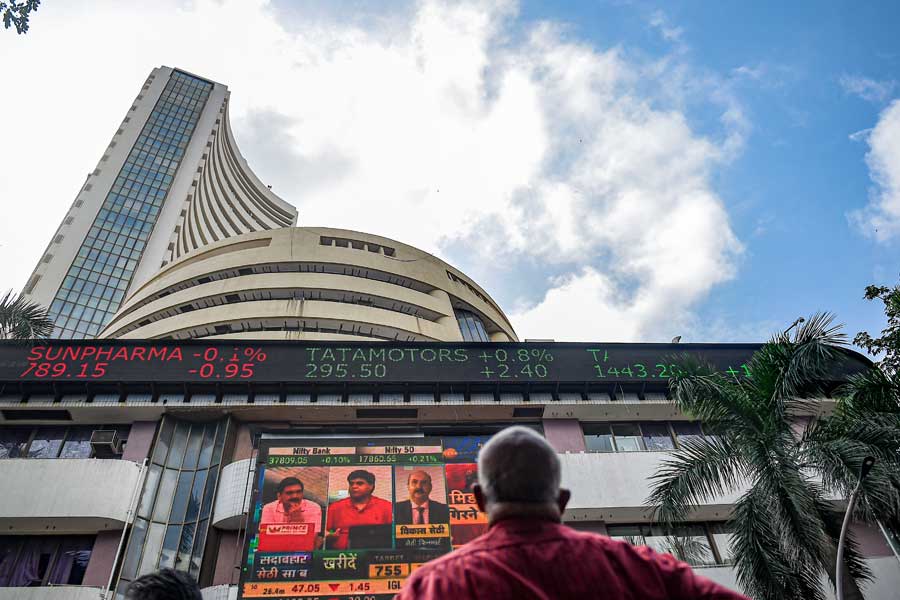Levison Wood has done enough in life on his own two feet — hitchhiked from the UK to India, walked the length of the river Nile, over the Himalayas and across Central America, crossed the Caucasus, circumnavigated the Arabian Peninsula and followed the migration of elephants in Botswana. The best-selling author and photographer, who has worked and travelled in over 100 countries, is now starring in a four-part Discovery+ docu-series, titled Expedition Borderlands with Levison Wood and Ash Bhardwaj. The two friends are on a quest to explore the lives of those living along the volatile borders of India and Pakistan in course of a 2,500km journey that has them crossing over from one side of the border to the other, covering off-beat locations like Tyakshi, Turtuk, Nubra Valley, Dras, Kargil, Teetwal and Gurez in India and Lahore, Peshawar, Khyber Pass, Nowshera, Taxila, Skardu and Khaplu in Pakistan to gain an insight into the lives of the people torn asunder by the Partition.
The Telegraph chatted with the explorer on a video call.
Your mother’s surname is Curzon. Are you related to Lord Curzon, the former Viceroy of India?
Not to my knowledge. May be distant illegitimate children (laughs out loud). My mother’s father was Peter Curzon but they were a different class of people. He was a mechanic and an engineer.
How did life in the army appeal to a son of teachers?
My father was in the reserves of the Territorial Army in the 1970s. He is very proud of his military past of digging holes in Germany, or defending us against Russians, as he likes to put it. My grandfather was conscripted in World War II and drafted to fight in Burma, and was stationed in Calcutta in 1943. I remember listening with awe to his stories of India as a child. He was only 18 when he was sent off on a ship via Cape Town to Calcutta. He spoke very highly of India. Since then, I was desperate to explore the world beyond my hometown. Where I grew up, at Stoke-on-Trent, there was a large Indian and Pakistani community, so I grew up with people from different cultures.
How much time did your grandfather spend in Kolkata?
He was there for about three months before them going to Burma. But obviously in between the fighting he would come back via Burma. He was also in Nagaland and in the border regions.
At what point did you think you could actually turn adventure into your profession?
I had always wanted to be a writer and I grew up reading stories of explorations — (Ernest) Shackleton and the Poles, or (David) Livingstone and Africa. I had this fascination with travel literature. I had studied history in university with speciality in travel writing, focused on the great overland journeys of Marco Polo, Alexander the Great... I wanted to do something like that myself. My first big overland journey was before I joined the army, when I was 22. I decided to hitchhike from London to India through all of Russia, Chechnya, the Islamic republics. Iran and Afghanistan. So I had already got an understanding of Afghanistan before being sent back there a few years later with the army. That was a very different experience, in 2003-04.

Levison Wood in Arabia

Did the army stint prepare you for a life of adventure?
These were the building blocks of my career. Before I did my first TV show, I was a roving reporter and photographer in Syria, Afghanistan, Iraq... I was fixing for journalists, so I was getting people across borders and things like that. Thus I got extensive experience travelling in conflict and post-conflict zones in 2009-14. I was also taking people to do things like skiing on the Iran-Iraq border, horse riding in northeastern Afghanistan, camel riding across the Sudanese Sahara…. But I knew I had to do something beyond just taking tourists and journalists into war zones. So that’s where the concept of the Nile journey came — something big and bold that was worthy of a story. It was in 2014. Thankfully it was successful and has led to almost a decade of television.

Crossing the brown Nile for the first time at the beginning of the expedition in Rwanda

Levison Wood stands at the top of Murchison Falls, Uganda
The Nile expedition was tough, wasn’t it? Someone accompanying you died and you ran into a civil war in South Sudan...
Yeah, plenty of things went wrong. But I also appreciate the fact that I had been given this opportunity to fulfill my dream, so I never kept a Plan B.
Later, when you circumnavigated the Arabian peninsula, you were embedded with Iraqi troops.
Yes. I had first travelled around the Middle East (central Asia) in 2003. But even after I had made three or four documentaries, nobody in the UK was willing to back my journey, saying it was too dangerous. So it was a self-funded project. We were embedded not just with the Iraqi troops but also with the PMF (Popular Mobilization Forces), the Iran-backed militia groups that were fighting inside Iraq. A lot of these guys were Iranians, linked to Hezbollah, so it was strange being embedded with registered terrorist groups. Some of these guys were fighting against American and British troops not so long ago. I met this sniper who had killed many British soldiers and it was strange sitting and interviewing him. But you learn to look beyond the politics and see people as human beings with their own viewpoints of the world.
So you were undertaking the journey in parts with opposing forces?
Yes. We did the same in Syria. We visited places like Homs, guarded by (President Bashar al-) Assad’s troops, then we were in Rojava with the Kurds and the Free Syrian Army. So we’d see it from both angles.
Did they know that you had been sleeping with the enemy, so to say?
It was only because they knew that I had been a soldier that they entertained my request to be embedded with them. They told me that were I from the BBC or something, they would never have trusted me to take an objective standpoint.
You had already walked the length of the Himalayas, Afghanistan to Bhutan. So, when you shot for this documentary, Expedition Borderlands, was it a familiar terrain?
Yes, I had been to Afghanistan several times. It made sense to start at the Pamir mountains. It gave me an opportunity to see the diversity of cultures and people that live along the span of the mountain ranges. That was a really inspirational journey for me. You meet so many remote communities that live hard lives but the sense of hospitality on that journey was incredible.
What was the logic behind taking a co-host along this time? Your earlier journeys were solo.
Ash (Bharadwaj) is a good friend of mine from university. We had discussed this journey to India for a long time. During my Pakistan trip, he was supposed to visit but he was refused a visa because of his Indian heritage. We thought it would be a great opportunity for me to learn through the eyes of someone who has family links with the region.
When was this project commissioned?
This goes back to 2019 when Discovery India wanted to do something along the border. We decided to explore both sides and showcase what life is like on the other side. We started in Ladakh, went right up to Turtuk, the village closest to the Line of Control, then Leh, Srinagar, Amritsar and finally went down to the Wagah border, crossed into Lahore and then we went up the other side, travelling the same route but on the Pakistan side, seeing some of the similarities but also the differences. We did a slight detour and went to the Afghan border, Peshawar, Taxila, Skardu and again closer to the Line of Control.
You had a tough experience of border crossing in your Walking the Himalayas show. Was it easier this time?
She was 96, and her son on the Pakistan side had not seen her in 50 years. So that was a really special moment. This guy was so happy that he got the photograph framed. But it showed just how difficult it must be for these communities to cross the border and how big a privilege it was for me to do that journey and help bridge some of those gaps.
Walking so many miles, do you ever keep a pedometer?
(Laughs) I have long since given up counting. There is something special about walking. You expose yourself to the same vulnerabilities and frustrations as people on the way. They let you into their lives, often invite you to their homes and you learn a lot about them.
What do you always keep with you?
I try to keep things very basic and I don’t carry anything in terms of luxuries apart from my camera. If you’re invited to people’s homes, you need a clean shirt. You can’t turn up in your sweaty jungle rags. So I always keep one clean.
Sedentary people walk to stay fit. You walk for a living. What do you do to stay fit?
I try to walk. Even in London, I walk around the city. If something is half an hour away, I will walk. I walk a couple of miles every day.
So the recent tube strike in London did not stop you?
No. It didn’t. (Laughs)
Have you done any advertisements for footwear?
(Laughs) In course of my walking career, I have been asked by brands to design footwear. I have designed boots, espadrilles... I have learnt shoe designing. I have a range of footwear here with a brand called Oliver Sweeney. I have used my desert boots in Arabia. I have designed an explorer’s jacket…
Ever been in a situation when you thought your goose was cooked?
Many times. In south Sudan, I was on the roof of a hotel as the rebels were trying to retain the city. There were bombs going off everywhere. In Iran, we were on the frontline, fighting against ISIS. And in Ukraine, you are sitting in a hotel and you hear the rockets landing all around...
It’s been written that what you do is 10 times more dangerous than what Bear Grylls does...
I didn’t write that. (Laughs) I’ve met Bear. He’s a great guy. We are interested in different things. For me, the heart of my journey is not just the physical elements or the sense of adventure. It’s meeting the people. I’m less interested in testing myself physically. I’d rather shine the spotlight on remote communities or places that are interesting.
How dangerous is it to be with a camera crew when you are in a conflict zone?
In March, I was in Ukraine to make a film. It was the second week of the conflict. The Russians were bombing Kyiv. It is important to have a very small team. You don’t want a whole circus following you around, just a couple of guys.
Any stretch still undone?
The world is a big place. I haven’t spent too much time in South America, Southeast Asia as well. I’d love to do a journey following the early human migrations from Asia to Australia, through Indonesia, Papua New Guinea, the old spice islands... Right now, I’m focusing on projects that have a social impact... like climate change, deforestation, habitat loss and endangered species. I am blessed with a platform which I can use to inspire others.
When one retires, one is supposed to idiomatically put one’s feet up. You have just turned 40. Do you see such a day coming?
(Laughs) I can’t imagine a time when I won’t travel but I can imagine a time when I will travel for my enjoyment. I am blessed to have this opportunity to travel and share those journeys but there may come a time when I won’t want to be followed around by a film crew.
There were still some delays in the permission, a lot of inquiries made on what the documentary would be about. But we were granted permission to go as far as we could. We got even to the Afghan border.
Any anecdotes you can share?
People on both sides are members of the same community. We met two sides of a family which have not seen the other side in many years. The younger ones had never crossed the border and even the older ones I think crossed just once or twice over the course of 70 years. So I took a photograph of the family on the Indian side and that photograph came with me all along the journey till I could give it to the son of this old lady.
Pictures courtesy: Discovery










